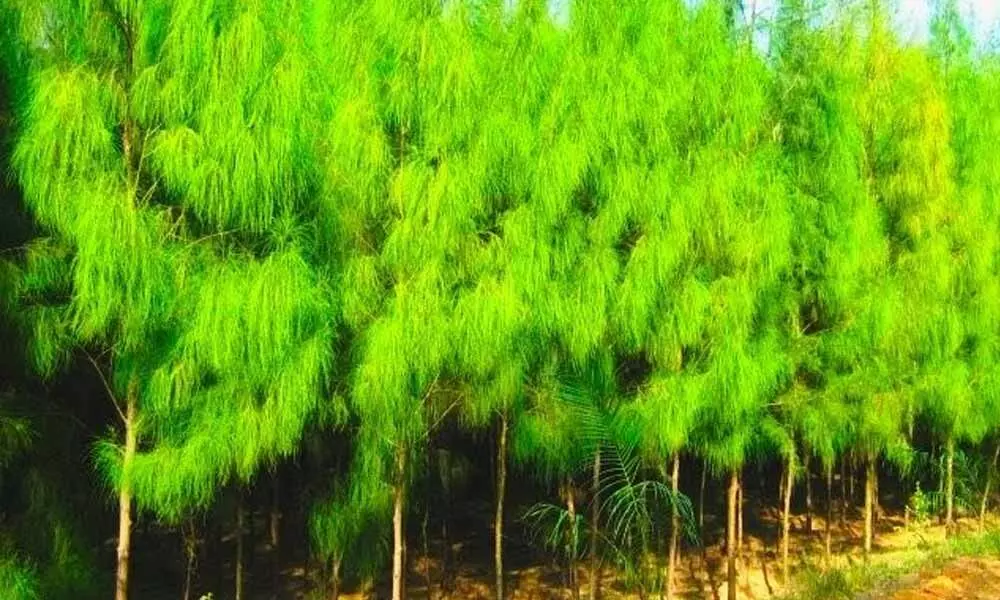Nellore: Casuarina growers reap bumper harvest
Casuarina growers reap bumper harvest

Nellore: Good prices in the market and favourable weather conditions are encouraging farmers to grow casuarina plantations extensively in the district. Normally, the farmers grow casuarina in an extent of 10,000 hectares, is now enhanced to 18,000 hectares. Earlier, the farmers who used to get Rs 30,000 per acre are now getting Rs 1.50 lakh per acre.
Earlier, the plantations were being raised in Podalakur, Chillakur, Rapur, Kaluvoya, Ozili, Balayapalli, Dakkili, Sydapuram and Gudur coastal mandals and now the farmers of upland areas of the district are showing interest in them. Nellore district, which has a 157-km-long coastline, has a rich growth of plantations in stretches where fishermen's habitations and hamlets are located. In the wake of rapid industrialisation and the setting up of seaports, the social forests are facing the threat of destruction. These forests are the best protection in times of cyclones, especially during November.
S K M Basha, a conservationist and researcher, said that casuarina plants and other such varieties were being grown in a width of 10 metres to 100 metres in most of the coastal belts earlier and gradually they vanished due to the greediness of land sharks. But they are now seen in many upland mandals.
A farmer P Ramana Reddy from Chillakur mandal said earlier there were no proper rains in some parts of district and the growth of trees was also not good for getting a good price. Now, the situation is encouraging due to comfortable rains for some years and they are getting reasonable prices in the market. Experts in social forestry say casuarinas are fast-growing trees with wide-ranging adaptability of different environments. These trees can grow up to 100 feet tall with a diameter of 60 cm and can survive up to 50 years in favorable conditions. They can improve soil fertility by fixing atmospheric nitrogen and does also work as a good shade and windbreak medium.
Upland areas of the district started in hill tracts for protecting them from soil erosion. There are newly developed varieties that are basically considered as 'low input-low value' can be able to adapt to various soil and climatic conditions. They give a yield of at least 45 to 50 kg of wood each.


